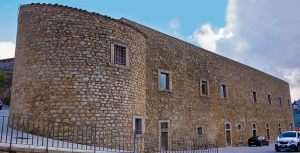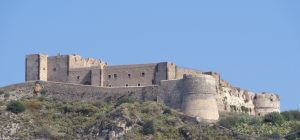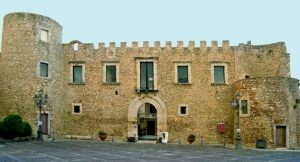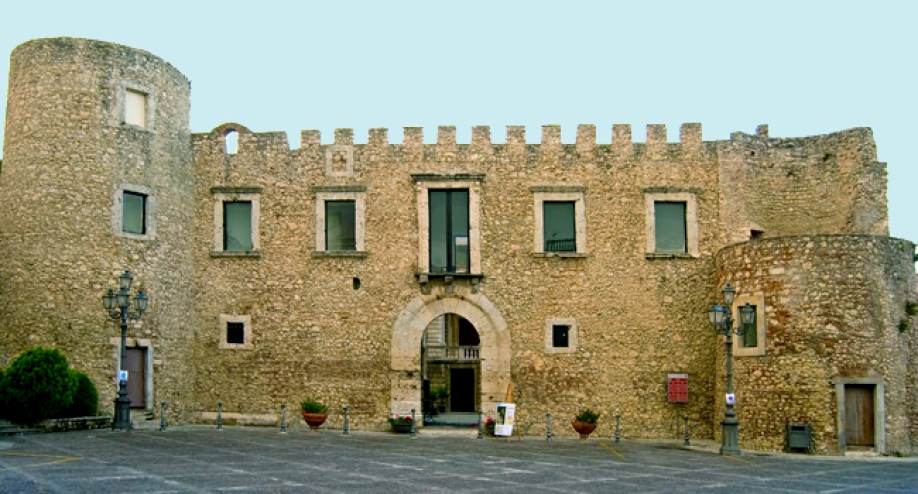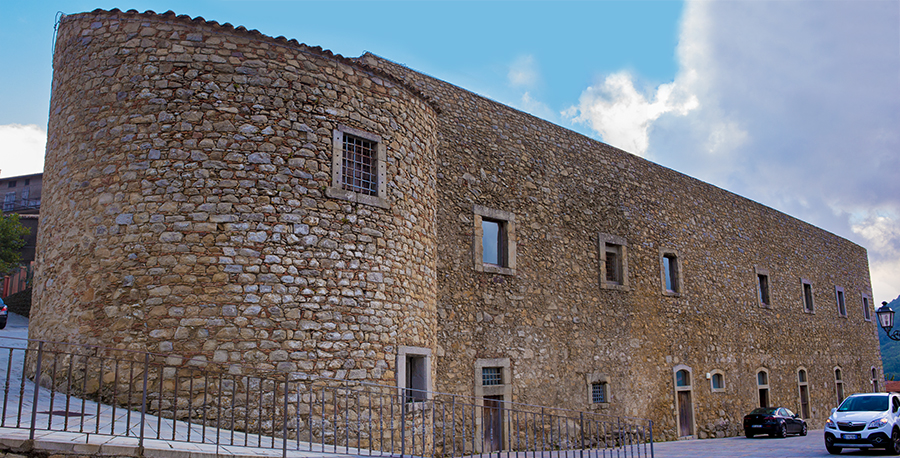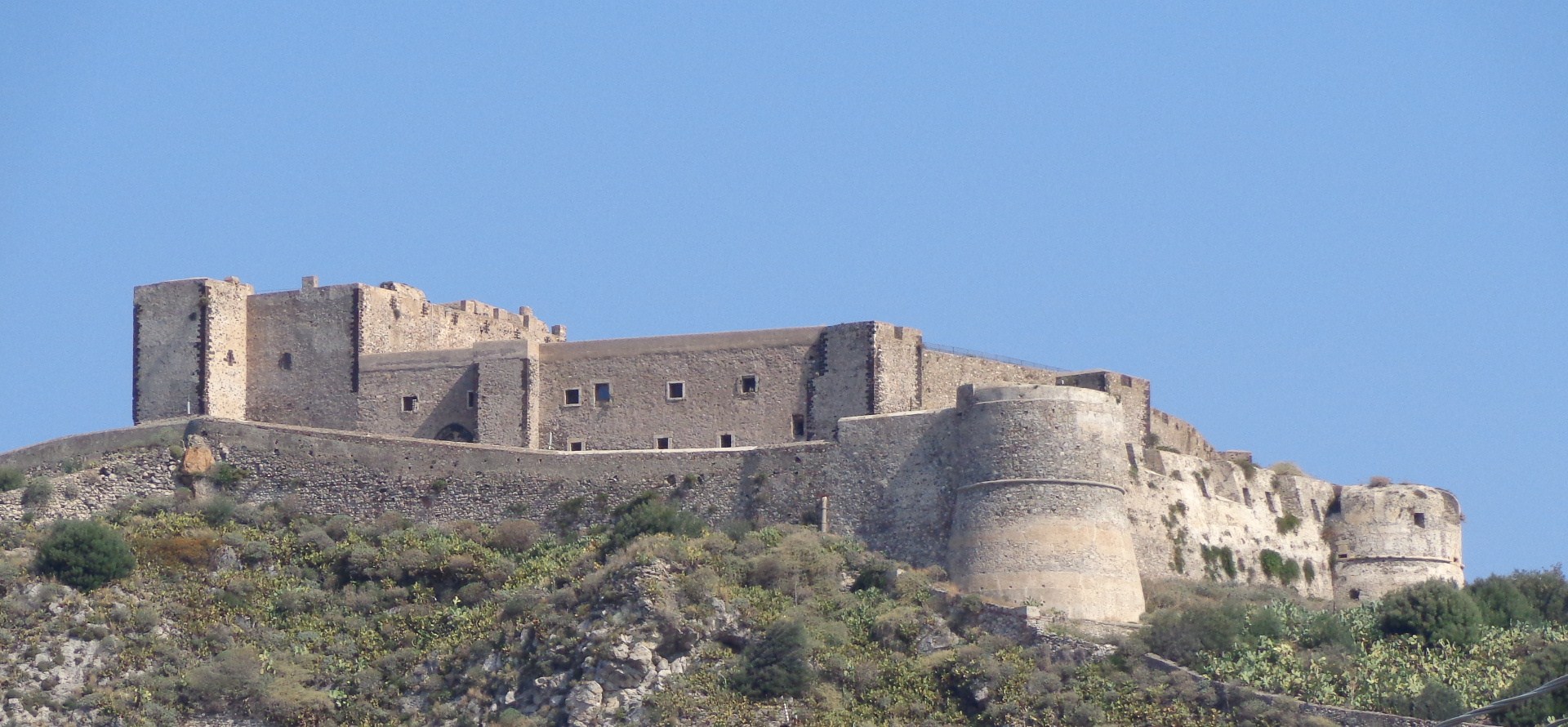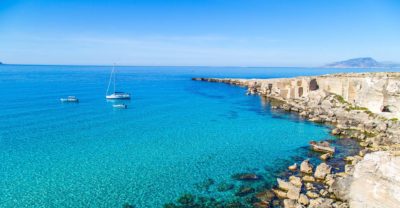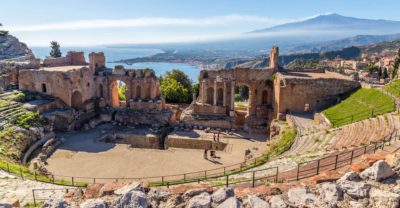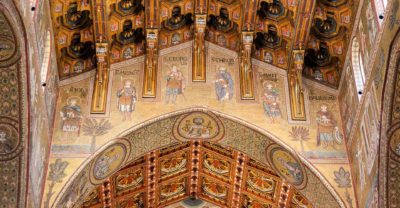Towers and Castles
Messina
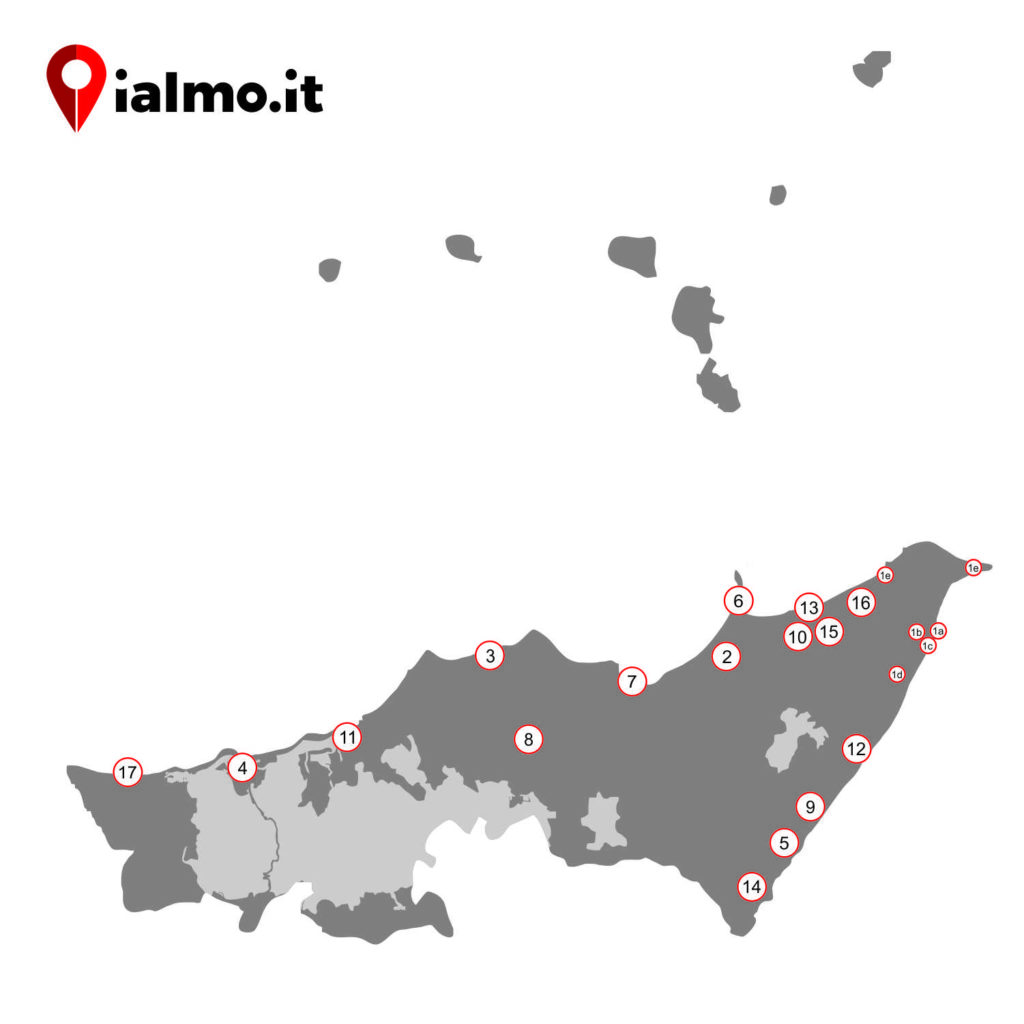
Castles and Towers of Messina, Messina:
1a Fort of the Most Holy Savior: it was built in the first half of the sixteenth century on the right arm of the port sickle. On the bell tower there is a statue in gilded bronze six meters high and depicting the Madonna della Lettera;
1b Castel Gonzaga or Forte Gonzaga: it was built in 1540 by Charles V of Habsburg and the Viceroy of Sicily Don Ferrante Gonzaga in the construction of an impressive defensive system of the city. The building, built in a dominant position on the top of Monte Piselli, has a low shape and a star-shaped plan with six large triangular corner bastions. The perimeter of the fort is surrounded by ditches;
1c Real Cittadella: imposing military construction with a star-shaped plan built by the Spanish between 1680 and 1686 and set up to defend the port of Messina;
1d Forti Umbertini: so called because they were built during the reign of Umberto I of Savoy for the defense of the Strait. Of the 22 Forti Umbertini 13 were built on the Sicilian coast and 9 on the Calabrian coast. Among these we remember: Forte Cavalli on Monte Gallo; Forte Campone; Strong Dinnammare; Polveriera or Masotto battery; Forte Schiaffino or Monte Giulitta; Forte Mangialupi; Castellaccio and Castello Matagrifone or Roccaguelfonia of which only an octagonal tower remains, on which one of the largest bells in Europe has been installed;
1e Remains of the walls of Torre della Lanterna; Torre di Contesse; Martello Towers of Ganzirri and Faro; Torre Faro and Torre Marmora or Torre dell’Ebreo.
Torri di Barcellona Pozzo di Gotto, Barcellona Pozzo di Gotto: In the district of Barcelona there are the remains of more than a dozen towers including that of Nasari (XII century), that of Gurafi, that of Sipio (XIII century) and the Canton ( incorporated into a subsequent building). Most of these towers are a legacy of Norman domination or are the result of the edifice of Frederick II, such as the Torre Longa of the eighteenth century.
Castello dei Lancia, Brolo: Among the monuments of greatest historical and architectural interest is the medieval Castle of Lancia which, enriched by a splendid fifteenth-century tower, was remodeled several times over the centuries. The fortified citadel is accessed via two doors: one overlooking the sea and the other, which serves as the main entrance, majestically surmounted by a sandstone arch and decorated with the coat of arms of the Lancia princes.
Caronia Castle, Caronia: Built in the 12th century, it is one of the best preserved buildings of Norman architecture in Sicily.
Forza D’Agrò Castle, Forza D’Agrò: built by Count Ruggero between the eleventh and twelfth centuries, stands on a cliff at the highest point of the valley. The entrance portal consists of large blocks of local stone. Inside the fortress there are the soldiers’ quarters, the remains of a powder magazine and the remains of the Crucifix church. In 1876 the castle was destined to become the cemetery of the village.
Castle of Federico II, Milazzo: Nominated national monument, the original nucleus of the building was built under the Arab domination (IX century AD) on the site of the pre-existing Greek acropolis. The structure was later modified and enlarged by the Normans and underwent many changes in later periods, but they left intact the symbol of the city painted on the base: a large winged scarab.
Oliveri Castle, Oliveri: built around the twelfth century on a cliff overlooking the sea, the Castle has been renovated several times over the years even if today unfortunately the ancient fortress has remained only a few remains.
Castello Branciforti, Raccuja: it was built at the end of the eleventh century by Roger I of Altavilla after the victory over the Arabs gained in the battle of the Fico valley. Over the centuries the building has undergone several changes: from a fortress it became a noble palace and then a prison of the past until the 1960s. Today the Municipal Library is housed on the first floor of the building.
Torre Sollima, Roccalumera: symbol of the village, the ancient Saracen watchtower was probably built at the beginning of the fifteenth century.
Roccavaldina Castle, Roccavaldina: of great charm, the Castle of Roccavaldina consists of two distinct complexes. The first, of Norman origin, is a fortress of typical medieval configuration with two fortified towers. The other, from the 16th century, is an imposing palace added to the original core of the Castle and once used as a residence for the Valdina family. Worth noting is the peculiarity of the battlement which is Guelph on the main and Ghibelline façade on the sides.
Gallego Castle, Sant’Agata di Militello: built and rebuilt in several phases, is the symbol of the village. The complex is built around a large square courtyard which overlooks the ground floor, the guard rooms, the warehouses and the stables.
Castello Ruffo, Scaletta Zanclea: Built on a promontory presumably between 1230 and 1240, Castello Ruffo is inaccessible on three sides. On the eastern one, the most practicable, it was built in the Middle Ages the ladder that connects the two hamlets. The noble floor refines the fortress with its double-lancet windows and now houses the Civic Museum, which displays evidence of the town’s history and the Ruffo family.
Spadafora Castle, Spadafora: the current structure of the building dates back to the second half of the fifteenth century, while probably originally the building was only a lookout tower, outpost of the castle seat of the feudal lord who was located in the hills. The local tradition wants an underground duct to connect the two fortifications, thus allowing the passage of soldiers and prisoners. Almost certainly the tower was enlarged or rebuilt around 1500 by the Florentine architect Camillo Camilliani, becoming that castle of which only the central part remains today. The building has been restored by the Superintendency for Environmental Heritage of Catania and later by the Superintendency of Messina, after the acquisition by the Sicily Region.
Palazzo Corvaja, Taormina: called Palazzo, although in reality it is a real castle, the building was erected between the seventeenth and nineteenth centuries on previous Arab fortifications (the cubic tower) and on buildings of the fifteenth century. Currently the first floor is home to the Museum of Popular Arts and Traditions while on the ground floor is the Tourist Information Office.
Castelmola Castle, Castelmola: the remains of the Castle rest on a spur of rock that overlooks the small medieval town and from which one can enjoy one of the most evocative views of Sicily. Castelmola represented a sort of second acropolis for the town of Taormina and probably will have played this role during the two Muslim sieges of Taormina in 902 and in 962 AD Of the original defensive system, today only traces of a low wall can be seen; specifically, a limestone and lava stone face is visible in which there is a large round arch, probably the main access door to the town. Beyond the door, on the right a staircase leads to the top part that houses the fortified shrine. The few surviving ruins give the appearance of a fortress centered on an imposing tower that in a western direction falls directly into the valley below. From this tower begins the main wall, of which some abutments remain.
Baronial Castle, Venetico: built as a military and residential building of the fifteenth century, the building was used as an exclusive private residence at the beginning of the 1800s by the Spadafora. Preserved in good condition until the beginning of the twentieth century, it was severely damaged by the earthquake that struck Messina in 1908.
Castello Bauso, Villafranca Tirrena: built by Stefano Cottone at the end of the sixteenth century, the castle stands on top of the town and is today considered the symbol of Villafranca Tirrena. Owned by the municipality, the Castle has recently been reopened to the public.
Castle of San Giorgio, Tusa: placed on the rocky ridge that surmounts the port of Marina di Tusa, it was built in the thirteenth century by the Ventimiglia family.
